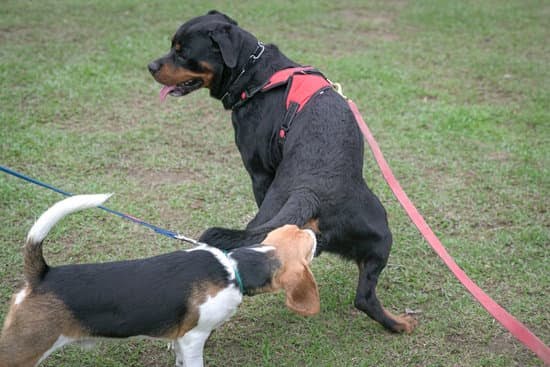Are you a dog lover looking to take your bond with your furry friend to the next level? Becoming a do-it-yourself dog trainer may be just the path for you. With the increasing popularity of dog ownership, effective training has become more crucial than ever. Not only does it ensure a well-behaved and happy companion, but it also saves you money and allows for a stronger connection between you and your beloved pet.
Being a DIY dog trainer offers valuable benefits on multiple fronts. Firstly, it saves you from the hefty expenses that come with professional dog training services. By taking matters into your own hands, you’ll not only save money but also have complete control over the training process. Additionally, being actively involved in your dog’s training establishes a deeper bond and understanding between both of you.
However, becoming an efficient DIY dog trainer requires proper guidance, techniques, and resources. Approaching training without adequate knowledge can lead to frustration or even ineffective results. In this article, we will delve into the essential steps and skills needed to become a successful DIY dog trainer.
From setting up the foundation for successful training to addressing common behavioral issues, we will provide insights, tips, and success stories to guide you along this rewarding journey. So let’s dive in and embark on the adventure of becoming a skilled DIY dog trainer.
Setting Up the Foundation for Successful Dog Training
In order to become a successful DIY dog trainer, it is essential to establish a solid foundation for your training efforts. This section will discuss the key aspects that form this foundation, including creating a positive and structured environment, providing a designated training area, and establishing clear expectations from the start.
One of the first steps in setting up a successful training environment for your dog is creating a positive and structured atmosphere. Dogs thrive on routine, so establishing consistent rules and expectations right from the beginning is crucial. This includes setting boundaries and providing clear guidelines on acceptable behaviors. Consistency is key here – every member of the household should be on board with enforcing these rules to avoid confusion for your furry friend.
Additionally, it is important to provide your dog with a designated training area. This can be an indoor space or an outdoor area like a backyard or park. Having a specific location for training sessions helps set the tone and focus for both you and your dog. It eliminates distractions and allows you to create a controlled environment where you can concentrate on teaching new commands or addressing behavioral issues.
To ensure effective communication between you and your dog during training sessions, it’s vital to establish clear expectations from the start. Dogs thrive when they know what is expected of them, so be consistent in your approach and make sure everyone involved in your dog’s care understands these expectations as well. Setting realistic goals and breaking down training into small achievable steps will help both you and your dog stay motivated throughout the process.
By setting up a positive and structured environment, providing a designated training area, and establishing clear expectations from the start, you are laying down strong foundations for successful DIY dog training. Building upon these foundations will enable you to progress further in understanding your dog’s behavior and psychology and foster effective communication with them.
| Key Points | Benefits |
|---|---|
| Create a positive and structured environment | – Establish consistency and rules
|
| Provide a designated training area | – Eliminates distractions
|
| Establish clear expectations | – Helps dogs understand what is expected of them
|
Understanding Your Dog’s Behavior and Psychology
When it comes to training your dog, understanding their behavior and psychology is crucial. Dogs have their own unique way of communicating, and by learning to read their body language and signals, you can effectively address behavioral issues and establish a strong bond with your furry friend.
Exploring Dog Behavior Basics
Before delving into training techniques, it’s important to have a basic understanding of dog behavior. Dogs are social animals that rely on a hierarchy within their pack. Understanding this pack mentality can help you establish yourself as the leader and gain your dog’s respect.
Additionally, dogs thrive on consistency and routine. By setting clear expectations from the start and providing a structured environment, you can create an atmosphere where your dog feels secure and understands what is expected of them.
The Power of Non-Verbal Communication
Dogs primarily communicate through non-verbal cues such as body language, facial expressions, and vocalizations. Learning to read these cues will allow you to better understand your dog’s emotions and intentions.
For example, a wagging tail doesn’t always mean a happy dog. Depending on the height, speed, and direction of the wag, it can indicate excitement or nervousness. By paying attention to these subtle cues, you can adjust your training approach accordingly.
Tackling Behavioral Issues with Understanding
Common behavioral issues such as aggression, anxiety, or destructive behavior often stem from underlying emotional or physical needs that aren’t being met. By understanding the psychology behind these behaviors, you can address the root cause rather than just suppressing the symptoms.
For instance, if your dog excessively barks when left alone, it may be experiencing separation anxiety. Instead of punishing the barking behavior itself, focus on gradually desensitizing your dog to being alone through positive reinforcement training techniques.
By taking the time to understand your dog’s behavior and psychology, you can approach training with empathy, patience, and a deeper understanding of your furry friend’s needs. This will not only enhance the effectiveness of your DIY training but also strengthen the bond you share with your dog.
Fostering Effective Communication with Your Dog
Effective communication is key to successful dog training. When it comes to DIY dog training, establishing clear lines of communication with your furry friend is essential for teaching them new commands and behaviors. By understanding and utilizing effective communication methods, you can foster a strong bond with your dog and ensure they comprehend what is expected of them.
One important aspect of effective communication with dogs is understanding their body language and signals. Dogs have their own ways of expressing themselves, and being able to interpret their cues can greatly enhance your training sessions. Pay attention to signs of stress, relaxation, excitement, or discomfort in your dog’s body language, such as tail wagging, ear position, or posture. This will allow you to adjust your approach accordingly and make the training experience more comfortable for your pet.
In addition to body language, verbal commands and hand signals are vital tools for communicating with your dog during training. Consistency is key when using verbal cues, so choose words that are easy for both you and your furry friend to remember. Always use the same command for a specific behavior and say it clearly and confidently.
Similarly, hand signals can be used alongside verbal commands or on their own if you prefer a non-verbal approach. Use distinct hand gestures that your dog can easily associate with certain actions or behaviors.
Positive reinforcement is another powerful tool in fostering effective communication with your dog. Rewarding desired behaviors with treats, praise, or play creates a positive association between the behavior and the reward. This motivates your four-legged companion to repeat those behaviors in the future. Be generous with rewards during training sessions but gradually phase them out as your dog becomes more proficient in responding to commands.
By focusing on clear communication through body language, verbal cues, hand signals, and positive reinforcement, you can establish a strong bond with your dog and set the stage for successful DIY training sessions. Remember that every interaction with your furry friend is an opportunity for learning and growth – both for you and your dog. With patience, consistency, and love, you can become an effective DIY dog trainer and strengthen the connection with your loyal companion.
Basic Training Commands Every DIY Dog Trainer Should Master
Teaching the Sit Command
The “sit” command is one of the most basic and essential commands that every dog should learn. It is the foundation for many other obedience commands and can help establish control and discipline. To teach your dog to sit, start by holding a treat close to their nose and slowly raise it above their head.
As their head follows the treat, their bottom will naturally lower into a sitting position. Once they are in a seated position, say the word “sit” clearly and immediately give them the treat as a reward. Repeat this process several times a day until your dog responds consistently to the command.
Troubleshooting tip: If your dog struggles to understand or perform the sit command, you can gently press downward on their lower back while saying “sit.” This slight pressure can make it easier for them to understand what you want them to do.
Mastering Stay and Come Commands
The “stay” and “come” commands are crucial for your dog’s safety and well-being. Teaching your dog to stay in one place helps prevent accidents, while teaching them to come when called ensures they always return to you when needed. To begin training the stay command, ask your dog to sit or lie down.
Hold up your hand with an open palm facing them like a stop sign and give the verbal cue “stay.” Take a step back, then immediately return and reward them with praise or treats if they remain in place.
To train the come command, first ensure that your dog has mastered leash walking so that it doesn’t run away during training sessions. Start by having someone hold onto your dog’s leash while you move several feet away from them. Crouch down with open arms and use an enthusiastic voice to call out their name followed by the command “come.”
When they come towards you, reward them with praise or treats. Gradually increase the distance between you and your dog to strengthen their recall abilities.
Exploring the Heel Command
The “heel” command is particularly useful during walks or outings with your dog. It teaches them to walk calmly beside you and not pull on the leash. Begin by holding their leash with a loose grip and keeping it short, so they are positioned next to your left leg or whichever side you prefer.
Start walking and say the verbal cue “heel” as reinforcement for their correct positioning. If they start to pull or move ahead, gently change direction or stop until they return to the proper heel position. Reward them with praise or treats whenever they maintain the desired position.
It’s important to practice these basic commands consistently in different environments with varying distractions. Gradually reduce the reliance on treats as time goes on, rewarding them intermittently instead of every time. Remember to always keep training sessions positive, short, and fun for both you and your furry friend.
By mastering these fundamental commands, you will lay a solid foundation for more advanced training techniques, foster better communication with your dog, and ensure that they are well-behaved in various situations.
Addressing Common Behavioral Issues
Addressing common behavioral issues is an essential aspect of becoming a successful DIY dog trainer. Dogs, like humans, can display unwanted behaviors that may hinder their overall well-being and the harmony within your household. In this section, we will identify some of the most common behavioral issues experienced by dog owners and provide practical strategies and techniques to overcome them.
One common behavioral problem is excessive barking. Dogs often bark out of boredom, fear, or to seek attention. To address this issue, it is important to understand the underlying cause and address it appropriately. Providing mental stimulation through interactive toys or puzzles can help alleviate boredom-related barking. For fear-based barking, desensitization techniques coupled with positive reinforcement can gradually minimize the response.
Another prevalent issue is jumping on people. While it may be cute when they are puppies, it becomes a nuisance as they grow older. Consistency is key in addressing this behavior. Teach your dog an alternative behavior, such as sitting or offering a paw when greeting someone. Reinforce these alternative behaviors with treats and praise to discourage jumping and encourage a more polite approach.
Leash pulling is yet another challenge faced by many dog owners during walks. The first step in tackling leash pulling is to ensure that your dog understands how to walk on a loose leash using positive reinforcement techniques such as clicker training or treats for good behavior. Additionally, using tools like no-pull harnesses or head halters can also provide added control during training sessions.
| Behavioral Issue | Strategies & Techniques |
|---|---|
| Excessive Barking | – Identify the underlying cause (boredom, fear, attention-seeking) and address it accordingly
|
| Jumping on People | – Teach an alternative behavior such as sitting or offering a paw for greetings
|
| Leash Pulling | – Teach loose leash walking using positive reinforcement methods
|
By addressing these common behavioral issues, you are not only enhancing your dog’s training but also creating a harmonious environment for both your furry friend and your family. Remember, patience and consistency are key components of successful DIY dog training. With the right techniques and a positive mindset, you can overcome these challenges and enjoy a well-behaved canine companion.
Advanced Training Techniques for the Ambitious DIY Trainer
As a DIY dog trainer, you may find that once you have mastered the basic commands and addressed common behavioral issues with your furry friend, you are ready to take your training to the next level. This section will explore advanced training techniques that can challenge both you and your dog while continuing to strengthen your bond and communication skills.
- Agility Training: Agility training is a popular choice among ambitious DIY trainers. It involves setting up an obstacle course with tunnels, jumps, weave poles, and ramps for your dog to navigate through. Not only does this help improve your dog’s physical fitness and coordination, but it also enhances their mental sharpness as they learn to follow your cues and complete the course in a timely manner.
- Scent Work: Dogs have an incredible sense of smell, making them perfect candidates for scent work training. This entails teaching your dog to track specific scents or find hidden items using their keen senses. Scent work not only stimulates their natural abilities but also provides mental stimulation and helps build confidence.
- Tricks: Teaching your dog fun tricks can be entertaining for both of you while reinforcing obedience skills. From advanced commands like roll over or play dead to unique tricks like fetching slippers or ringing bells, there are countless tricks you can teach your dog using positive reinforcement techniques.
When venturing into advanced training techniques, it is important to ensure safety and proper guidance. Consider investing in additional resources such as agility equipment or scent work kits designed for DIY trainers. Additionally, always prioritize positive reinforcement methods that reward good behavior rather than using punishment-based approaches.
Remember, these advanced techniques should be built upon a solid foundation of basic obedience training and understanding your dog’s behavior. The key is patience, consistency, and a willingness to adapt the training methods to suit your individual dog’s needs.
By embracing these advanced training techniques as a DIY trainer, you can continue to challenge both yourself and your dog, creating a well-rounded and enthusiastic companion. The journey of becoming a skilled DIY dog trainer is filled with rewarding experiences, and these advanced techniques will add an extra layer of excitement and growth to your training sessions.
The Importance of Continued Learning and Seek Professional Help When Needed
Continued learning and seeking professional help when needed are crucial aspects of becoming a skilled DIY dog trainer. While the previous sections have provided valuable information on establishing a strong foundation, understanding your dog’s behavior, fostering effective communication, mastering basic commands, addressing common behavioral issues, and exploring advanced training techniques, it is important to recognize that the learning process never ends. As a DIY dog trainer, you should always strive to expand your knowledge and improve your training techniques.
One way to continue learning is by attending training workshops and seminars. These events offer opportunities to learn from experienced trainers and experts in the field. Workshops and seminars often provide hands-on demonstrations, practical advice, and the chance to ask questions and receive personalized guidance. Additionally, these events often offer networking opportunities with other DIY dog trainers who share similar interests and experiences.
Another valuable resource for continued learning is online platforms and communities dedicated to dog training. There are numerous websites, forums, blogs, and social media groups where you can find tips, tutorials, videos, and discussions about various training methods and techniques. Engaging with these online communities allows you to learn from others’ experiences, ask questions to seek advice or feedback on specific challenges you may be facing with your dog training journey.
While becoming a skilled DIY dog trainer is an admirable goal, there may come a time when professional help is necessary. Professional trainers have extensive experience working with dogs of all breeds and temperaments. They possess deep knowledge of canine behavior theories as well as proven training methods that can help address complex behavioral issues or challenges that may be beyond your skill level as a DIY trainer.
When seeking professional help, do thorough research to find qualified trainers who have positive reviews and certifications from reputable organizations such as the Certification Council for Professional Dog Trainers (CCPDT). It’s essential to establish open communication with the professional trainer so that they understand your goals for your dog’s training journey.
By continuously expanding your knowledge and seeking professional help when needed, you can ensure that you provide the best training for your furry friend. Remember that every dog is unique, and their training needs may vary. The more you learn and explore different techniques and resources, the better equipped you will be to tailor your training approach to your dog’s specific requirements.
Conclusion
In conclusion, becoming a skilled DIY dog trainer can be a rewarding journey filled with countless benefits. Throughout this article, we have explored the value of taking on the responsibility of training your furry friend yourself. From cost savings to a stronger bond with your canine companion, being a DIY dog trainer offers numerous advantages.
To set yourself up for success, it is essential to establish a positive and structured environment for your dog. By providing a designated training area, gathering necessary supplies, and creating a consistent routine with clear expectations from the start, you can lay down the foundation for effective training.
Understanding your dog’s behavior and psychology is also crucial in achieving successful results. Learning to read your dog’s body language and signals will allow you to address behavioral issues effectively. Additionally, fostering open and effective communication through various techniques such as verbal commands, hand signals, and positive reinforcement will strengthen the bond between you and your four-legged friend.
As a DIY trainer, mastering basic training commands like sit, stay, come, and heel is essential. By providing step-by-step guidance in teaching these commands and offering troubleshooting advice for common challenges along the way, this article aims to equip aspiring trainers with practical skills.
However, it is important to recognize that every dog is unique and may encounter behavioral issues along their training journey. By addressing common problems such as excessive barking or leash pulling with practical strategies and techniques discussed in this article, DIY trainers can overcome these challenges successfully.
For those seeking more advanced challenges in their training journey, explorations into agility training or tricks can add excitement and fulfillment. Through sharing success stories of ambitious DIY trainers who have taken their training to the next level with these techniques, readers are inspired to expand their horizons.
Lastly but crucially important is the emphasis on continued learning and seeking professional help when needed. The world of dog training is ever-evolving, so it is vital to continually educate oneself through attending workshops, seminars or consulting professional trainers. By providing recommendations on reliable resources and online platforms for ongoing education, this article empowers DIY trainers to continuously improve their techniques.
Frequently Asked Questions
Is it possible to train a dog yourself?
Yes, it is definitely possible to train a dog yourself. Many dog owners successfully train their dogs without the help of professional trainers.
The key to training a dog on your own lies in consistency, patience, and clear communication. By understanding and implementing basic obedience commands, positive reinforcement techniques, and establishing a strong bond with your dog, you can effectively train them to follow rules, respond to cues, and exhibit desirable behaviors.
What are the 5 golden rules of dog training?
While there might not be a universally agreed-upon set of “golden rules” for dog training, there are some widely accepted principles that can guide you towards successful training. Firstly, consistency is crucial – using the same cues and commands consistently will help your dog understand what is expected of them. Secondly, positive reinforcement plays a vital role in training; rewarding good behavior encourages dogs to repeat it.
Thirdly, clear communication is essential; make sure your cues are easily understandable by using distinct signals or verbal prompts. Fourthly, be patient and understanding as different dogs will learn at their own pace. Lastly, always prioritize safety during training sessions by providing a secure environment and using appropriate gear.
Is it hard to train a dog by yourself?
Training a dog by yourself can certainly have its challenges but it’s not necessarily hard if you approach it with dedication and the right mindset. Like any new skill or endeavor that requires teaching another living being, patience is essential when working with dogs because they have unique learning abilities and personalities. While some dogs may quickly grasp concepts and commands, others may take more time and effort to respond effectively.
Consistency in training methods is also vital as inconsistency can confuse dogs leading to slower progress or mixed results. Setting aside regular time for focused training sessions with your dog allows you both to establish routine and develop better communication while building trust and strengthening your bond along the way.

Welcome to the blog! I am a professional dog trainer and have been working with dogs for many years. In this blog, I will be discussing various topics related to dog training, including tips, tricks, and advice. I hope you find this information helpful and informative. Thanks for reading!





